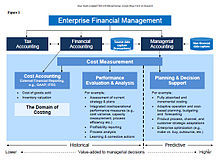
For an already-discovered resource, such as an existing coal mine, cost is the price paid for the property. The allocation of the cost of natural resources to expense in a rational and systematic manner over the resource’s useful life is called depletion. (That is,depletion is to natural resources as depreciation is to plant assets.) Companies generally use the units-of-activity method to compute depletion.
What is the accumulated depletion of a natural resource?
What is Accumulated Depletion? Accumulated depletion is the amount of depletion expense that has built up over time in relation to the use of a natural resource. This amount is paired with the natural resource asset on the balance sheet as a contra account.
If there is an obligation to restore the land to a usable condition, the firm adds these estimated restoration costs to the costs to develop the site. In some instances, companies buy only the right to extract the natural resource from someone else’s land. Natural resources and In USA GAAP, it is deduction out of total cost of respective natural resource like mine , timber, petroleum , oil and gas wells . Depletion may happen during the time of quarrying, drilling, or felling the natural raw material from natural sources. On the way, we often stop off to fill our tanks up with gasoline.
Accumulated Depletion Defined
On the balance sheet, accumulated depreciation on the building appears with the related asset account. Companies depreciate plant assets erected on extractive industry property the same as other depreciable the accumulated depletion of a natural resource is reported on the assets. If such assets will be abandoned when the natural resource is exhausted, they depreciate these assets over the shorter of the physical life of the asset or life of the natural resource.
Because fi nancial calculators do not typically solve for the n th root, we have chosen to present the declining-balance method. Helpful Hint The method recommended for an asset that is expected to be signifi cantly more productive in the fi rst half of its useful life is the declining-balance method. Residual value is an estimate of the asset’s value at the end of its useful life.
CompanyCompany
The date when intangible assets are acquired is the start of amortization for these assets. In accounting, accumulated amortization refers to the sum allocated to an asset from when it started being used to the period it was quantified. Next, multiply the cost per unit derived in by the total number of units extracted or consumed during a particular period. The aircraft is depreciated using the straight-line method with a useful life of 20 years and an estimated residual value of $3,000,000.
Where is depletion on income statement?
Cost depletion is typically part of the "DD&A" (depletion, depreciation, and amortization) line of a natural resource company's income statement. Depletion is similar to depreciation, which is used to allocate the cost of tangible assets like factories and equipment over their useful lives.
Additionally, both sets of standards require that the cost of the asset be recognized over the economic, useful, or legal life of the asset through an allocation process such as depreciation. However, there are some significant differences in how the allocation process is used as well as how the assets are carried on the balance sheet. It is important to note, however, that not all long-term assets are depreciated.
Plant Assets,
Long-lived assets are assets that are used actively in the operations of the business, and that are expected to benefit the operations into the future. Tangible assets are long-lived assets that have physical substance. Intangible assets are long-lived assets without physical substance. Zhang makes the following summary entry to record the purchase and related expenditures. The useful life of assets, such as the cost of replacing tires and brake pads on rental cars.

